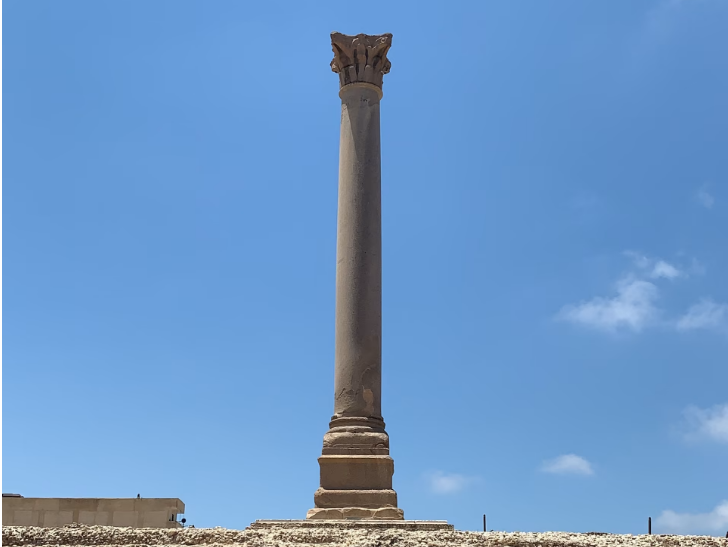Pompey’s Pillar
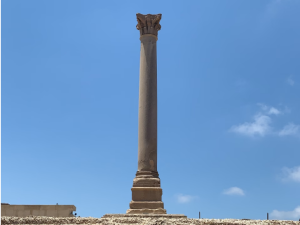
Pompey’s Pillar
Located in the Karmouz district near to the Kom el-Shouqafa catacomb
Pompey’s Pillar:
Europeans initially believed that the Roman general Pompey, who fled to Egypt from Julius Caesar and was subsequently killed by the Egyptians, had his head placed in a precious jar atop the statue. Thus, they named it Pompey’s Pillar.
The Pillar of the Flags:
In the Arab era, it was a tall column among others, hence the name “Pillar of the Flags” due to its height and elevation.
The most likely theory is that it is the Pillar of Diocletian,
the Roman emperor who suppressed a rebellion in Alexandria. The Alexandrians built this pillar in his honor and inscribed a Greek inscription on its western base, praising the just and invincible Emperor Diocletian.
The pillar is made of red granite and stands approximately 26.85 meters tall, including the column and its base
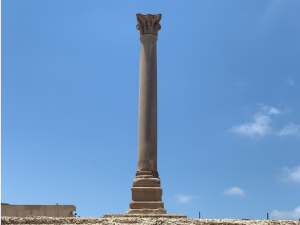
The Serapeum
Since the founding of Alexandria, Ptolemy I sought to unify Egyptian and Greek religions into a trinity led by the god Serapis, his wife Isis, and their son Harpocrates. Serapis was depicted in two forms: an Egyptian form as the Apis bull and a Greek form as Zeus, a middle-aged, muscular man with a thick beard and five strands of hair symbolizing the five districts of Alexandria. He hold the clathos, a vessel of good thigs, on his head. The Serapeum, a temple dedicated to Serapis, was built during the reign of Ptolemy III, who also founded the Library of Alexandria. Only ruins remain of this temple, with sphinxes, as was customary for the ancient Egyptians, standing in front of it.
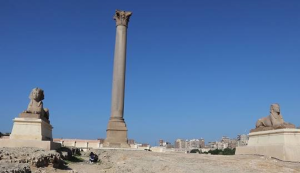 Picture of two sphinxes
Picture of two sphinxes
Important Discoveries at the Site
In 1895, the scholar Botti discovered a statue of the god Serapis in the form of the sacred Apis bull, which is now housed in the Greek Museum of Alexandria. In 1944, foundation deposits were found, consisting of plates made of glass, gold, silver, bronze, and some Nile mud. These are now preserved in the Greek Museum of Alexandria. Botti also discovered (in 1895) two secret passages inside the temple that extended to the base of Pompey’s Pillar. These passages contained cavities where, after the burning of the Library of Alexandria (during the conflict between Cleopatra and her brother Ptolemy XIII), the most important books from the library were transferred, which was completely destroyed in that war, The second cavity led to the Holy of Holies, where at the end was a black basalt replica of the Apis bull statue. Between the library and the Holy of Holies, there was a stone block serving as an altar for offerings to the god. In the area, there was also a purification basin with a small opening for water transfer. It was used for purifying individuals before entering the Holy of Holies. Additionally, there was a Nile meter connected to the Nile via a canal. Its purpose was to measure the water level for determining taxes.
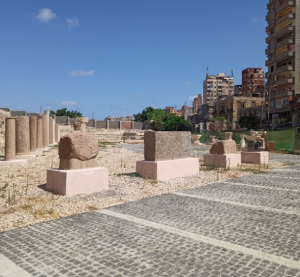
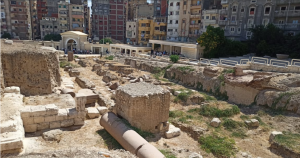 Photos of the remains of the Serapeum temple
Photos of the remains of the Serapeum temple
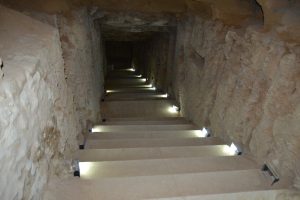 Stairs leading to secret passages
Stairs leading to secret passages
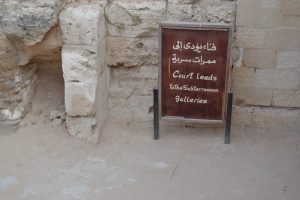
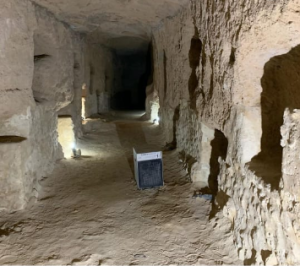
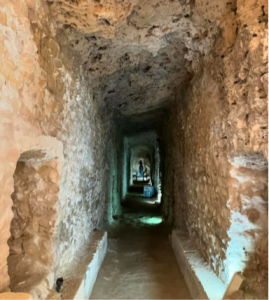 secret passages that were known as the small library in which the books of the library of Alexandrina were stored
secret passages that were known as the small library in which the books of the library of Alexandrina were stored
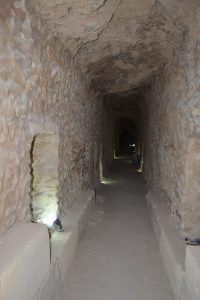 The secret passages between the library and the Holy of Holies
The secret passages between the library and the Holy of Holies
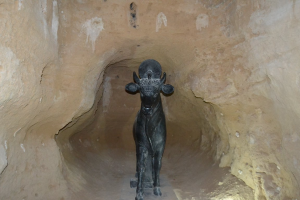 Black basalt calf statue Apis inside the Holy of Holies
Black basalt calf statue Apis inside the Holy of Holies
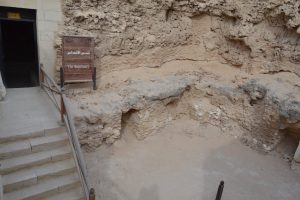 Purification basin
Purification basin
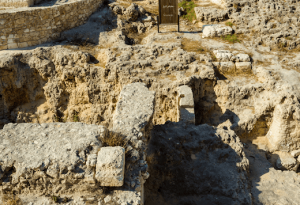 Nilometer image
Nilometer image

